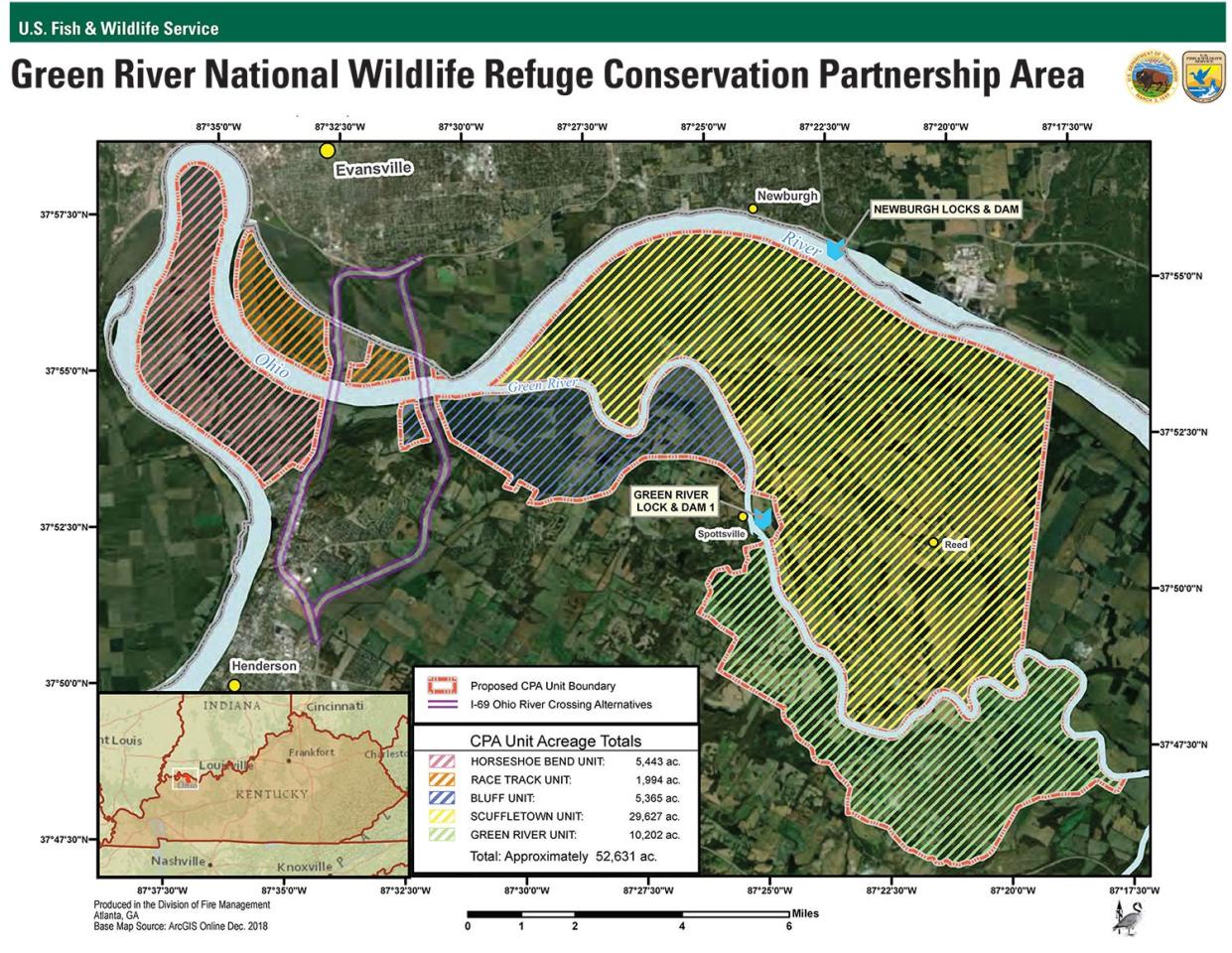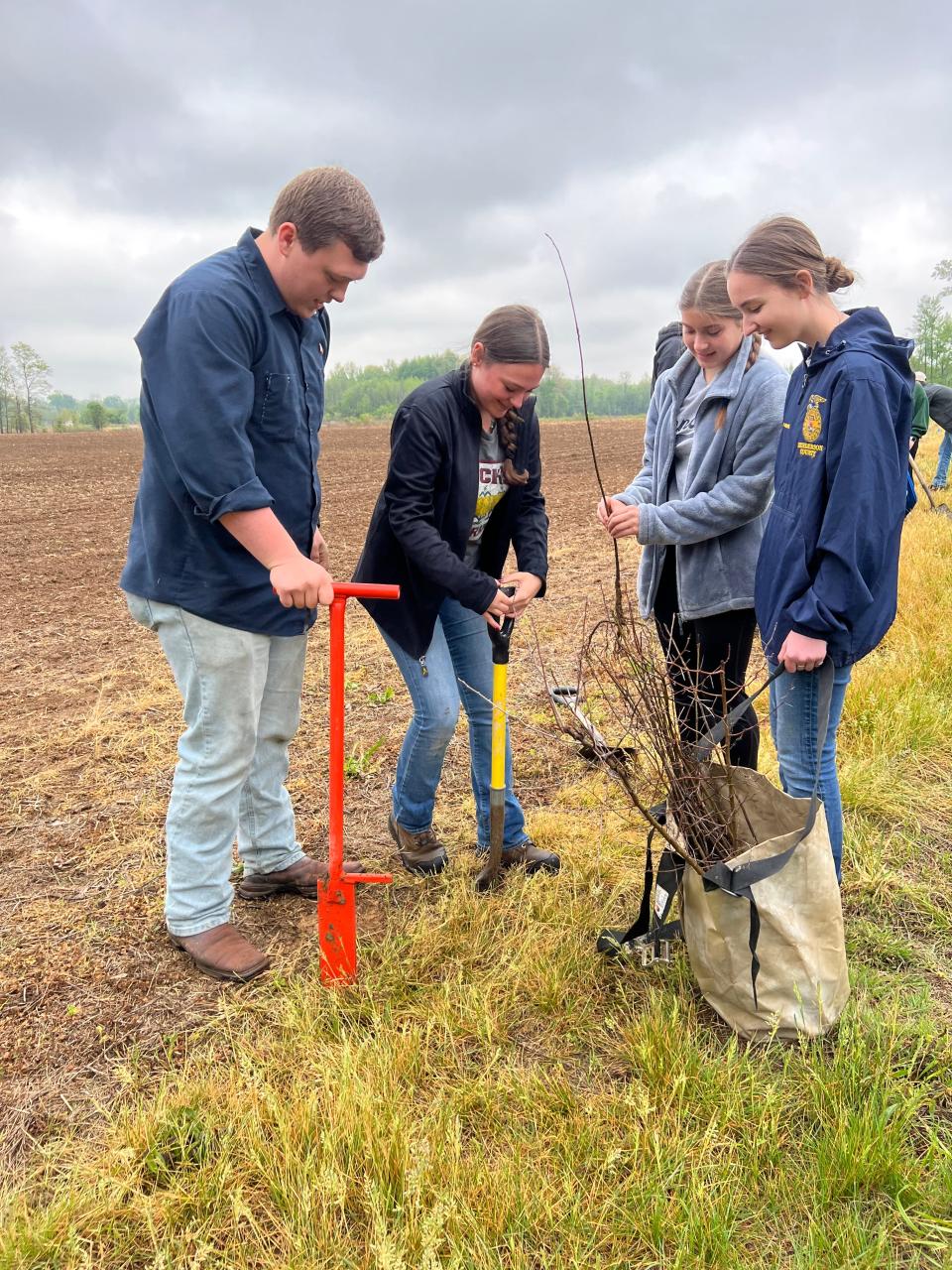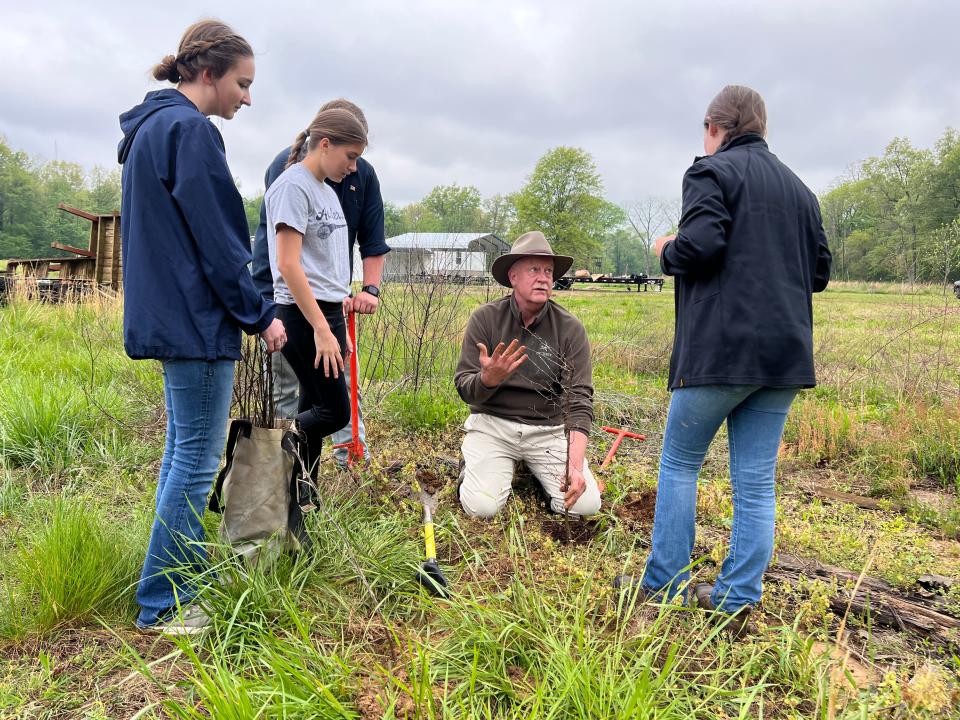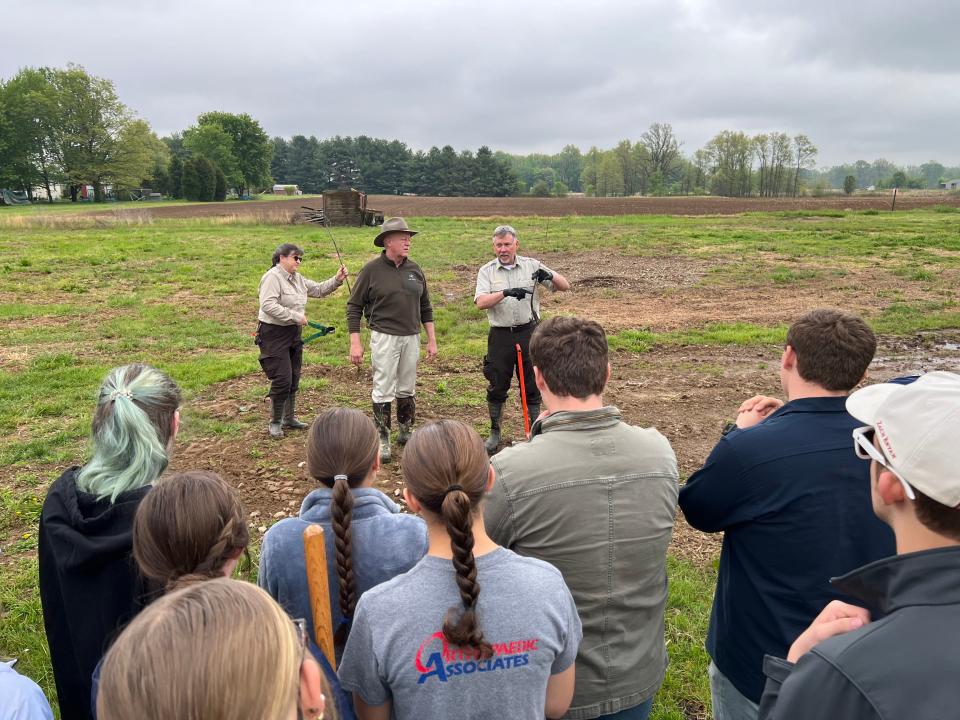Green River National Wildlife Refuge gets financial boost that will nearly triple its size

HENDERSON, Ky. − The years-long campaign to develop the Green River National Wildlife Refuge north and east of Henderson got a huge boost last week with the news of funding to acquire bottomland that will nearly triple the size of the refuge later this year.
The U.S. Department of Interior announced that Green River will receive nearly $11.4 million from the federal Migratory Bird Conservation Fund to acquire 1,335 acres, which will boost the size of the Henderson County refuge to 2,042 acres.
The acreage includes wetlands and bottomlands as well as some cropland, according to Chase Fulcher, the president of the volunteer group Friends of Green River National Wildlife Refuge.
Fulcher declined to identify the exact location of the property or the sellers, pending the closing of the acquisition this summer or fall.
Local life: Ukranians living in Evansville area still finding ways to help family, friends back home
The funding comes primarily from the sale of Federal Migratory Bird Hunting and Conservation Stamps, commonly known as Duck Stamps, and import duties on imported arms and ammunition.
“To acquire (those more than 1,300 acres) that immediately is huge to our county,” Fulcher said.
The Green River National Wildlife Refuge could someday total as much as 24,000 acres as willing property owners agree to sell or donate more ground surrounding the confluence of the Green and Ohio rivers. Including conservation partnerships with property owners, the refuge could encompass as much as 52,000 acres.
Acreage eligible for the refuge includes:
The Horseshoe Bend area northwest of Henderson;
The land across the Ohio River around Ellis Park racetrack that is part of Kentucky;
Ground south of the Green River and east of Henderson that’s referred to as the Bluff Unit;
The vast Scuffletown river bottomland north of the Green River from the mouth of the Green River to the Daviess County line, surrounding little communities such as Reed and Beals;
and land south of the Green River stretching from Spottsville to the Daviess County line that’s called the Green River Unit.
Thanks to the newly announced federal funds, “We’re already ahead of schedule” in the long-term quest to acquire acreage, Fulcher said.

Michael Johnson, who manages the Green River Refuge as well as the Clark’s River National Wildlife Refuge near Benton, Kentucky, has said the near-term goal is to acquire contiguous property as much as possible, with a focus on the Horseshoe Bend and Bluff areas.
For now, public use of Green River Refuge ground is limited. “Right now, we don’t allow hunting and fishing. We have a process to go through to get those open,” Johnson said. “Other wildlife-related activities such as hiking, bird-watching or wildlife observation and photography is permitted in a large percentage of (the refuge), but are some small tracts that are located close to facilities that are posted as closed. The larger body is open for being on.”
Ultimately, Johnson said there will be portions of the refuge that will be closed to public access; portions that are closed seasonally, such as in the winter when ducks and geese are seeking refuge; and areas that will be open year-round.
Local food: For the first time since Chi-Chi's, the area has a Mexican buffet restaurant
Green River presently has a volunteer who lives in a house on the refuge to keep an eye on the property and mow certain areas.
“Hopefully we’ll have a full-time staff person in the future,” said Fulcher, who also hopes that a classroom setting will someday be available.
The Green River Refuge began with 10 acres along Green River Road No. 2 that was donated in 2019. It became America’s 568th national wildlife refuge, but only the second in Kentucky.
Coincidentally, last Friday, on the morning after last week’s funding announcement, 24 ag students from Henderson County High School went to that site to plant native hardwood tree saplings such as pin oak, dogwoods and persimmons under the guidance of Johnson and Fulcher.
“Quality is way more important than speed,” Johnson instructed, explaining the importance of getting each two-to three-foot-tall sapling’s tap root extending straight down into the earth instead of getting bent (“Don’t J-root it”) and snugging soil around the roots.
As they prepared to unleash the ag students on their task, Fulcher turned to County High agriculture teacher Kristy Lancaster for guidance. “We need to keep them out of the mud, right Kristy?” he asked.

“Naw, let them play,” she answered.
In spite of rain showers the day before, the teenagers found the soil on the grassy site beside a plowed field surprisingly stubborn as they struggled to force narrow shovels and specialized tree-planting tools called dibble bars into the ground. As the morning progressed, they gradually planted two rows of trees 10 feet apart; the bulk of the 454 saplings were subsequently planted with a tree-planting machine.
The trees, along with as a pollinator mix that will be spread, will eventually help support migrating waterfowl, songbirds and other wildlife. “Our sole mission is wildlife first, people second,” Johnson said.
“These trees like wet conditions,” he said. “They’ll grow fairly fast in this setting.”
But when it comes to trees and assembling wildlife refuges, “fast” is a relative term. Johnson cautioned that for the first two or three years, most of the trees’ growth will be subterranean as roots take hold.

“I hope in six years, eight years, 10 years you can come out and say, hey, I did this!” Johnson said.
Expanding the size of the refuge will take even longer — decades, in all likelihood, dependent on the availability of funding and willing sellers.
As Ben Burnley, a retired wildlife biologist and Ducks Unlimited staff member who serves on the Friends of Green River National Wildlife Refuge board of directors said Friday, “We’re doing this for our grandkids.”
***
Additional information about the refuge is available at www.fws.gov/refuge/green-river and https://www.facebook.com/GreenRiverNWR.
This article originally appeared on Evansville Courier & Press: Wildlife refuge near Henderson gets grant from bird conservation fund

